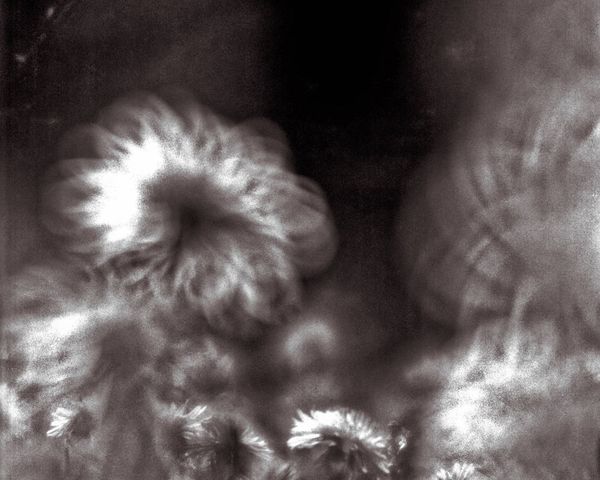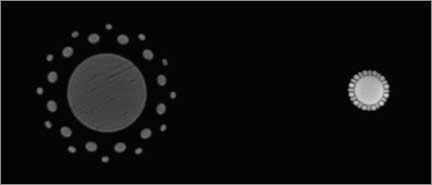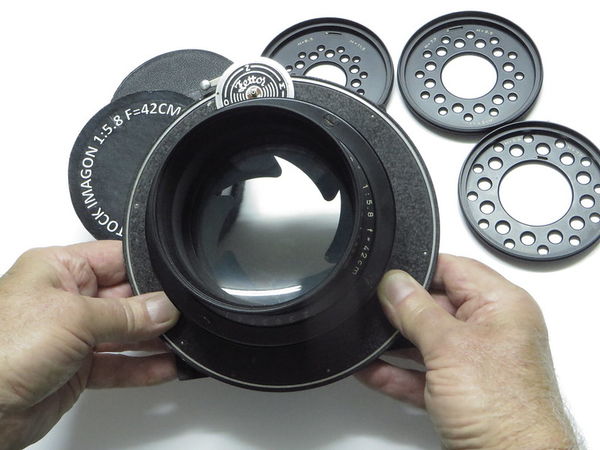Strange bokeh
Jun 1, 2019 23:49:15 #
I recently bought a new Nikon 28-300mm 1:3.5-5.6 G and was trying it out on my D7200. Starting with this shot and the following four, which I won't show, there is this strange ripple-like anomaly in the bokeh and it appears in about the same place on the other shots as well. This effect isn't seen in the two shots of the bird before the shot I'm showing, or the next few of the bird perched on a wire farther away and then in the branches of a tree. I don't see the effect anywhere else at all. Should I send the lens back for a replacement or can someone suggest why or how this occurs and maybe I should just chill?

Jun 2, 2019 00:48:31 #
moosus wrote:
I recently bought a new Nikon 28-300mm 1:3.5-5.6 G... (show quote)
I have this lens and the bokeh is okay. Something is weird with your new lens. If you have the option to have it replaced, then I would do so. Otherwise, send it to Nikon Service under warranty for repair. It is a fine lens for travel when only one lens can go along.
Jun 2, 2019 02:29:06 #
moosus wrote:
I recently bought a new Nikon 28-300mm 1:3.5-5.6 G... (show quote)
I have never seen (experienced) an effect like that. Something is wrong somewhere. To test your lens or just out of curiosity (more so), find something to shoot that is in flat lighting without the secular highlights and pretty much fills the frame in focus from side to side. Try a series of shots say something like this 28mm @ f/3.5, 28mm @ f/8, 28mm @ f/22, 50mm @ f/3.5, 50mm @ f/8, 50mm @ f/22, 105mm @ f/4, 105mm @ f/8, 105mm @ f/22, 135mm @ f/4, 135mm @ f/8, 135mm @ f/22, etc., etc., to 300mm @ f/5.6, 300mm @ f/11, 300mm @ f/22. And take a close look on your computer Monitor to see if there are any odd ripple effects.
Jun 2, 2019 02:47:32 #
Your posted shot looks like a crop. Did the centre of the ripples coincide with the centre of the frame before cropping?
Jun 2, 2019 04:39:01 #
Timmers
Loc: San Antonio Texas.
moosus wrote:
I recently bought a new Nikon 28-300mm 1:3.5-5.6 G... (show quote)
What follows is why so many on the Hog Forum regard me as a jerk. It does not bother me one bit. When one is truly a master of your discipline then one learns to deal with the envious regards from the lesser practitioners in ones field.
The effect is generally in the realms of that category of what you are calling bokeh, but it is merely an effect and not the 'reason' for what you are seeing. There is nothing malfunctioning with your lens that this image is displaying.
Now the boring didactic part of this story/explanation. Everyone has heard of the golden means, also the Fibonacci principle. That Fibonacci principle is attributed to an Italian story about I guy who championed the principle of what is also referred to as the golden means. Essentially the golden means is a FOUNDATION of the active principle that governs the way our world works. The growth, the PATTERN of that growth in the natural world follows this interesting pattern. The way leaves grow on a stem and branch from weeds to giant elm trees, that pattern is followed. It is encoded in the life structure from a single leaf and the spiral of a snails shell. So there is an inherent pattern created by the plants leaves and the pattern you are seeing in this display, be it called bokeh or golden means it is the outcome of the inherent pattern that leaves exhibit as they break up the beams of light flowing through the tree's leaf pattern.
An additional didactic reference for this can be found by looking up a rather unique photographic lens made by Schneider called the Imagon. To achieve the 'soft focus' effects of the Imagon a device is installed in the front of the lens called an 'airy diffusion disk'. This is the part of the Imagon lens that creates effects like those you see in your image sun light through the tree's levees. In some images where a direct light source is shown in the photograph, the airy diffusion disk may show as a cluster of tiny points of light as seen as circles if the lens disk is dialed fully open or as partial crescents if closed down.
I found several images associated with the Imagon lens. The first shows the effect in the Christmas tree lights, especially to the right of the image. The second image shows the extreme effect most call bokeh and are the repeating pattern of diffraction with interference of light waves generated by the shaping pattern by a simple lens. The third images shows the Imagon airy diffusion disk and the light pattern it generates when in use. The last image is of an Imagon lens with it's airy diffusion discs.
To end this, the pattern you are seeing is the natural patterning of sunlight as it passes through leaves that interfere with that light and are creating a 'pattern' that is inherently made up of a pattern that you are seeing based on the golden means. Your natural and biological response to this pattern is built into the biological structure of your own body. Congratulation! You are a living being who for a moment has connected to the natural structure of the world in which you are part! I know, way to Pagan for the Hog! LOL!!!
All the images shown are from the internet, they are not my photographs.
Jun 2, 2019 05:46:42 #
moosus wrote:
I recently bought a new Nikon 28-300mm 1:3.5-5.6 G... (show quote)
Shoot a few other shots in different situations with out-of-focus backgrounds and see if the effect is similar. If not, it is not the lens, but perhaps the way some elements in the background interacted.
Jun 2, 2019 06:13:10 #
Thanks for the feedback. I did crop the shot but the ripple seen here is in the same place as in the original uncropped shot and the other four shots I didn't show; basically a large circle at "08:00," in the lower left with an attendant ripple farther out to the upper right at about "02:00." I was wondering (hoping) if an explanation, rooted in physics, would provide an answer rather than it be a flawed, lens production issue. I've seen the "Golden Mean" mentioned in this forum before and I'm thinking this is the explanation for my anomaly. Thanks to all for your suggestions. MM
Jun 2, 2019 07:04:34 #
moosus wrote:
....I've seen the "Golden Mean" mentioned in this forum before and I'm thinking this is the explanation for my anomaly....
That may be true IF it's happened with only the background shown and never with any other background (you don't mention if the other four shots are of the same background or different). If it's happened with any other background then it has to be something inherent in the lens. That will be especially true if it happens only at specific focal lengths.
The fact that the attendant ripple is in a completely different location from the circle but still obviously related to the circle (sharing a common centre) suggests to me that it's a lens effect rather than a background effect.
Jun 2, 2019 07:59:41 #
Timmers wrote:
What follows is why so many on the Hog Forum regar... (show quote)
While I am not in the group that considers you a jerk (though I’m unimpressed with the 70’s era B&W nudes you’ve posted in that section of UHH - so now you can consider me one) for all your scientificality I believe you are completely wrong (I’ve used a Schneider airy disk filter for overall softening effects).
As was noted by @R.G. above the odd pattern seems to be comprised of two concentric components, the inner one to the left of the bird’s beak and the outer one just appearing in the upper right corner of the image (and the OP says he cropped the image, so a full size version would be helpful here). @moosus needs to post other examples, but from this it would indeed seem to be a flaw in the lens itself, which, by the bye, I have owned for 5+ years at this point.
Jun 2, 2019 08:16:46 #
Try looking at the glass with the lens removed from the camera. There may be a visible flaw or obstruction somewhere. Also check your camera to be sure there isn't something stuck between the lens and the mirror.
Jun 2, 2019 08:24:10 #
Jun 2, 2019 08:39:52 #
Jun 2, 2019 08:53:45 #
Jun 2, 2019 09:05:40 #
Wow! I have the same lens, but I've never seen that. Try shooting in a lot of similar situations with similar settings - also with dissimilar situations and settings. If that isn't a regular occurrence, I'd forget about it. It would be nice to have it explained, though.
Jun 2, 2019 09:06:29 #
Gasman57 wrote:
Maybe a hurricane in the backround?
Or a mini black hole. : )
If you want to reply, then register here. Registration is free and your account is created instantly, so you can post right away.












